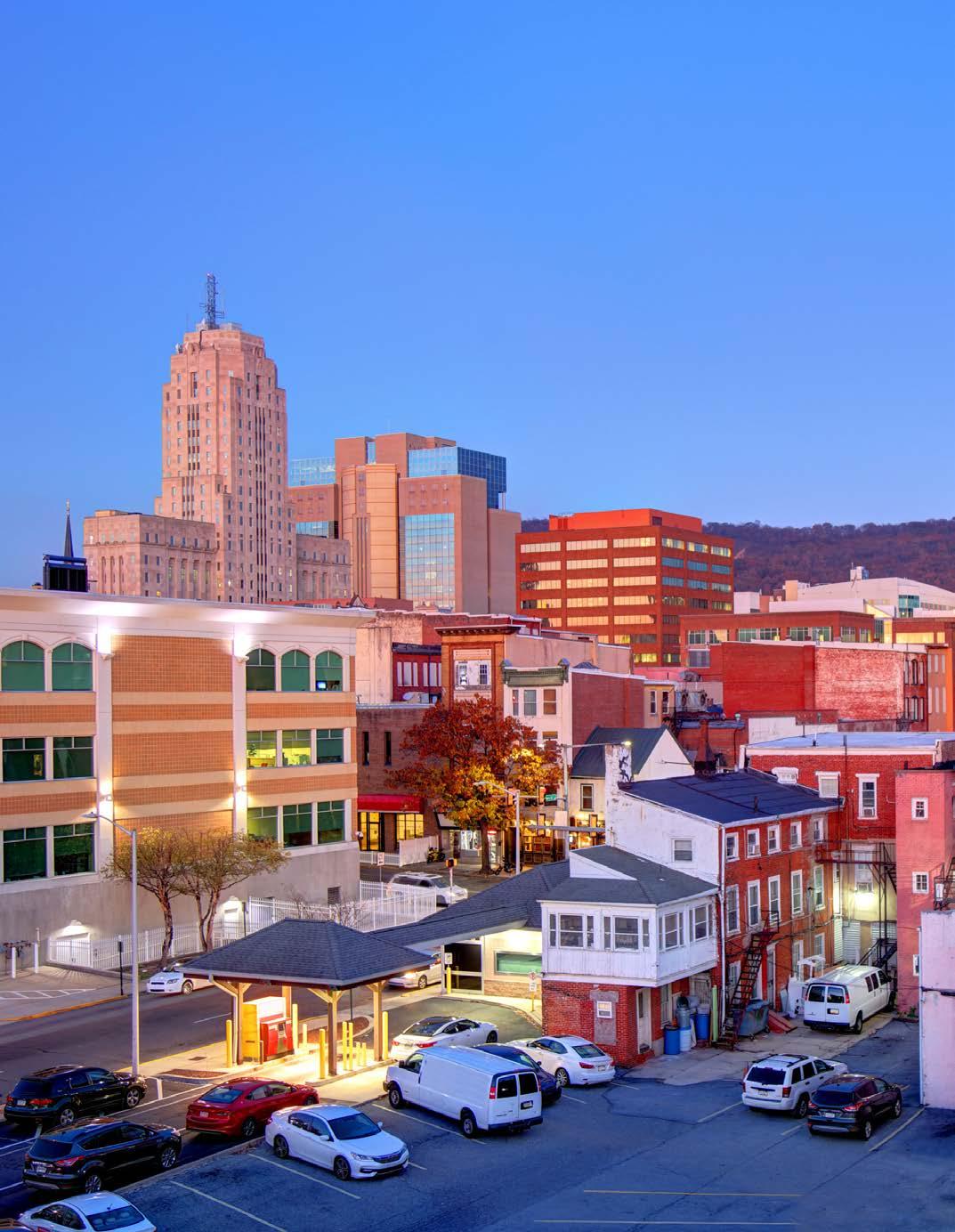





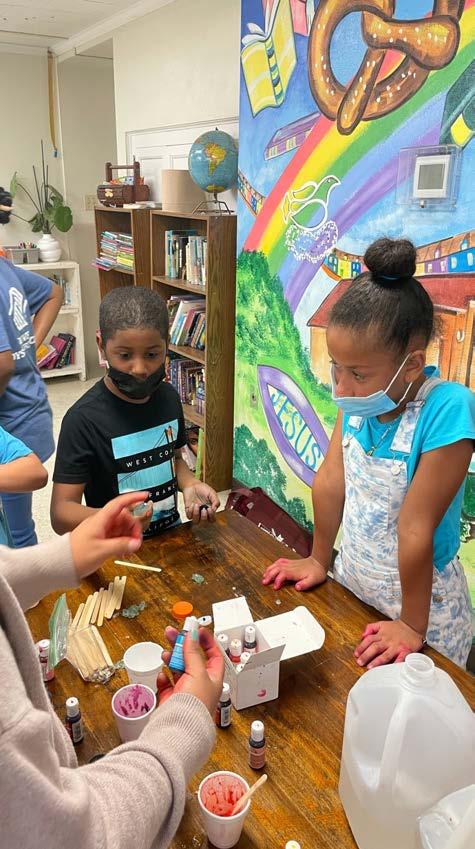
PREPARED BY THE HARWOOD
INSTITUTE FOR PUBLIC INNOVATION IN PARTNERSHIP WITH CENTRO HISPANO
WRITTEN BY RICHARD C. HARWOOD, ANDREW TAYLOR, AND JED MILLER

The Harwood Institute for Public Innovation 4915 St. Elmo Avenue, Suite 402 Bethesda, MD 20814
phone 301-656-3669
fax 301-656-0533
email info@theharwoodinstitute.org web theharwoodinstitute.org
The Harwood Institute for Public Innovation is a non-profit, nonpartisan organization that equips people, organizations, communities, and networks with the tools to bridge divides, build capacity, and tackle shared challenges. The Harwood Institute’s work is rooted in a philosophy of Civic Faith and the practice of Turning Outward. Founded in 1988, the Institute’s approach has spread to all 50 states across the U.S. and 40 countries around the world.

Centro Hispano Daniel Torres Inc. 501 Washington Street, Suite 306 Reading, PA 19602
phone 610-685-1266 email info@centrohispano.org web centrohispano.org
The Centro Hispano Daniel Torres Inc., located in Reading, PA, is a nonpartisan 501c3 non-profit organization that inspires collective impact by supporting and enhancing the acculturation of the growing Latino population in Reading and Berks County. We live our mission through collaborative initiatives designed to break down barriers and build bridges of opportunity that enable individuals and families to improve their quality of life and the quality of life in their neighborhoods that we serve.
Reading Thriving, Together: A New Agenda for Education and the Community was prepared by The Harwood Institute for Public Innovation in partnership with Centro Hispano
We are grateful for the financial support from the Walton Family Foundation that made this report possible.
Written by Richard C. Harwood, Andrew Taylor and Jed Miller
Research by Laine Bourassa, John Conroy, Marla Crockett, Joe Krushinsky, Andrew Taylor, and Lydia Thacker
Assisted by Rick Olmos and Jen Dalton
Design by: Dresden Branding & Design
Photography by: Mateo Toro and Go Greater Reading Visitors Center
©2021 The Harwood Institute for Public Innovation
No part of this report may be reproduced in any form or by electronic or mechanical means, including storage and retrieval systems, without written permission from the copyright owners.

Dear Greater Reading Family,
Centro Hispano works each and every day to create a community where all individuals are part of the whole, where everyone’s voice is listened to and where we are all proud of our past and are working to make a stronger future, TOGETHER.
These core beliefs are at the heart of everything we do in Reading, and The Harwood Institute for Public Innovation shares these core beliefs. We are delighted to partner with The Harwood Institute for Public Innovation to create a community-driven agenda on education and to strengthen our community’s capacity to take effective action on that agenda. The Harwood Institute for Public Innovation is a nonpartisan, independent non-profit that equips people, organizations, communities, and networks with the tools to bridge divides, forge a culture of shared responsibility, build local capacity, and tackle shared challenges. As my good friend Rich Harwood says, “Our society must build a more equitable, just, fair, inclusive, and hopeful path forward.”
We hope that you will read and reflect on the report that follows. Most importantly, we hope that we can join together to take collective action to enable all young people and our community to thrive. Centro Hispano is committed to this work. I know The Harwood Institute for Public Innovation is. And I know that you are, too.
Let’s move Reading forward. Together.

Michael Toledo President and CEO
Listen to the voices of Reading. You’ll hear about promising sparks of change throughout the community. But let’s be honest: these efforts are not deep or broad enough. They do not touch enough people. They are not reflective of enough voices. They don’t offer enough hope—yet.
People in Reading want to do more. They’re ready to do more. One person we met told us, “We’re working to get better. We’re working the problems. We’re looking for solutions.”
My own experience is that communities move forward when enough people intentionally choose to step forward, turn outward toward one another, and set in motion meaningful actions that spread throughout a community like a positive contagion. They pay close attention, not only to developing new initiatives and programs, but also to the civic strength and culture of their community.
We live at a time in our nation when people are looking for a more equitable, fair, just, inclusive, and hopeful path forward. They want to believe that we have the ability to get things done together. They feel a special urgency today when it comes to the education of young people.
In Reading, getting this done will take breaking down more barriers and building more bridges between people. Efforts to strengthen education and the community must be spread through the community. Education must be seen not as the sole responsibility of the local public schools, but of the entire community. People are calling for a new, authentic, and shared can-do narrative—one that sheds once and for all the outdated narrative that Reading is the poorest city in the U.S. and cannot thrive.
Reading represents what America can be. You can see people reaching for action in many places. Now is the time for more to step forward. It’s time to come together.

Richard C. Harwood President and Founder
In early 2021, Centro Hispano and The Harwood Institute for Public Innovation forged an important partnership to engage the Reading community in creating a community-driven education agenda that would ensure every student has access to the American Dream. It would also strengthen the civic culture of Reading to take effective, sustainable action. This initiative is part of a national initiative supported by the Walton Family Foundation.
Over a five-month period, The Harwood Institute, with the support of Centro Hispano, undertook a series of conversations with community residents from twelve different neighborhoods across Reading. Each conversation
was held with cross-sections of approximately twelve people; five of these were held in Spanish. There were four additional conversations to delve deeper into issues that were surfacing from the initial conversations; one was conducted with high school students, another with teachers, and two with participants from the earlier conversations (one of which was in Spanish).
In addition, The Harwood Institute conducted thirty-six in-depth interviews with community leaders, which included elected officials and leaders from Reading Public Schools, non-profits, religious institutions, businesses, and other areas.
Here are the sections of the report that follow:
Introduction
This section provides an overview of the report.
Our Voices
In this section, you will hear people in Reading describe how they see and experience the community and share their hopes and concerns about the future.
Reading’s Education Agenda
This section provides a 9-point education agenda to bring about a more equitable, inclusive, and hopeful path forward for all of Reading’s young people and families.
Reading’s Public Capital
This section is a snapshot and analysis of the fundamental structures, networks, and norms of Reading through the lens of The Harwood Institute’s Public Capital Framework. This snapshot reflects what it takes for a community to work together effectively to achieve its goals; it was developed through the Institute’s research and on-the-ground work in communities in all fifty U.S. states.
Moving Forward, Together
This section lays out a shared path forward for Reading to achieve its education agenda and strengthen the community.
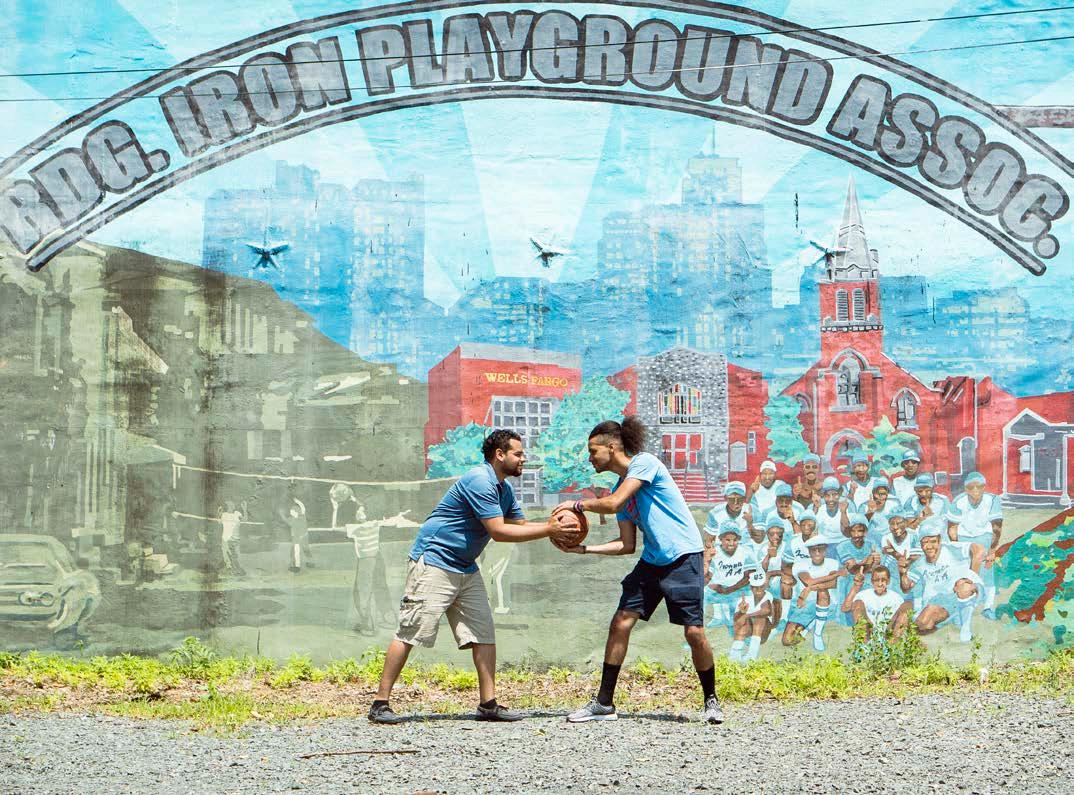
A national news story once named Reading the nation’s poorest community. It’s a story that has stuck to the community as if Reading will never thrive again and people’s shared aspirations for a better life will never be achieved. But what if that old news no longer fits? What if Reading already is more than it once was?
And what if Reading seeks to be even stronger, and thrive more fully, as people work to create its future? Together.
Since that news story ten years ago, Reading has changed dramatically. No longer an industrial town with a predominantly White population, it is now home to a diverse Latino community. Neighborhoods are multilingual, the population is more transient, and the city is growing and revitalizing in all sorts of ways. New investment is happening downtown; new programs are launching to support young people and families; and new and younger leaders are emerging.
Amid these promising signs of action, local residents, students, teachers, and community leaders are calling for a new education agenda rooted in shared
community action. This agenda is based on the belief that all young people should have equal access to education and to the resources they need to reach their goals in school, after graduation, at work, and as contributors to their community.
People are clear that effective action on this agenda can only come when the community makes education a community enterprise—with educators, community organizations, local groups, official institutions, and residents all moving forward with greater momentum and a shared purpose. This report documents Reading’s education agenda and a path for taking effective and sustainable action.
To move forward effectively will require a clear-eyed view of where the community is right now. It demands forging much stronger bonds of trust, more authentic and deeper relationships, and more dynamic ways of working together. Our interviews with leaders and conversations with residents surfaced three overarching themes that need the community’s urgent attention and action:
Many people feel they don’t have a voice. Educating young people is one of the most basic functions of a community. How people see education and their kids is often a mirror for
how they see themselves and their connection to the community. Without those strong connections, people’s engagement in community efforts diminishes, public will for change recedes, and people lose hope. Today, too many people in Reading say they are neither seen nor heard when it comes to the education of young people and the future of their community.
Real divides hold the community back. These include divisions between public institutions and civic groups, divides based on neighborhoods and their economic health, and divides in how people talk and work together. These divides are hindering effective community action and blocking more equitable and inclusive educational opportunities for all of Reading’s young people and families.
People want meaningful action, especially on education. People say Reading’s history is riddled with false promises of change. The community wants to break free of these old habits and take a new direction. Their impatience is especially clear when it comes to education. Local residents, students, teachers, and community leaders articulate a clear and compelling education agenda in this report; they seek meaningful shared action. We heard that current efforts in Reading are making a difference for young people and families, but we also
heard that they are not nearly enough to meet the community’s call for real action—and real equity—in education.
People in Reading want to move forward. They want to do it together. Make no mistake: They see no other route to success for educating young people and families and securing a better future for the entire community. Moving ahead will require making intentional choices about:
How the community defines broader and deeper actions that genuinely meet people where they are.
How the scope and pace of change acknowledge the community’s current levels of trust, the strength of its relationships, and its readiness and capacity for action.
How people and groups across the community develop authentic ways working together.
How the community’s actions can generate a new trajectory for hope that expands over time with increasing momentum and growing civic confidence.
This is all about calibrating change so that people and their community can win. To do this, it is essential to take the community where it is—and not where we wish it to be. Wishful thinking never produces real progress.
Over the past thirty years, The Harwood Institute has learned that it’s at this very juncture—when it comes time to take action on a new vision—that people must face reality if they are to create something different.
And yet, too often, those seeking positive change reflexively embrace old habits. We choose a path of comprehensive, highly coordinated plans, where we attempt to bring as many people and groups together as possible. But such efforts often stall out, or fail outright, due to the unwillingness or plain inability of so many groups to work together. What’s more, too many community efforts ignore, or do not truly know, what the community actually wants. We gravitate toward a one-sizefits-all approach, often imported from a different community with a different history and needs. Solutions end up imposed upon communities, leaving change undelivered and people feeling that they’ve lost control over their own lives and futures. There is a failure to understand and account for the community’s context.
At the root of such approaches is an assumption that communities need to be “fixed”—as if people and communities are seeking to have someone fix them.
As if the persistent challenges reflected in Reading’s education agenda can somehow be easily solved.
Communities move forward and thrive by growing themselves. They unleash a chain reaction that begins with single steps and expands over time. Such actions, when they are strategic, address the community’s fault lines and honor people’s shared aspirations. They are designed with the explicit intention to strengthen the community’s civic culture: the relationships, norms, leaders, organizations, and networks that enable a community to work. Taken together, these expanding steps grow the community’s civic confidence and belief in itself.
That 2011 news article about Reading is outdated. So, too, are many of the ways the community has sought to address its challenges. It’s time to commit to a new direction, taken with shared purpose and driven by common action.
This is the work—the opportunity—that stands before Reading.
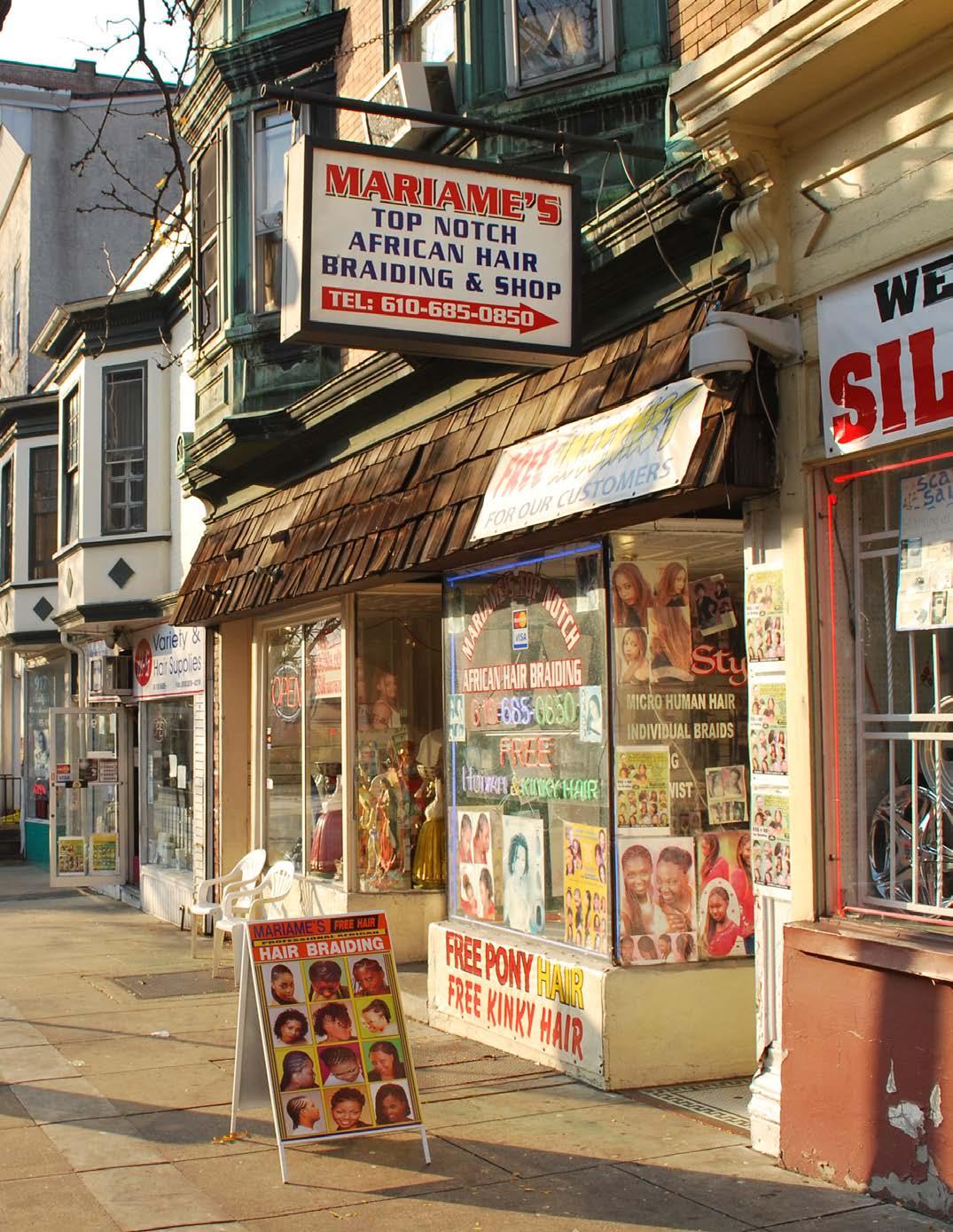
The Reading community faces a tangle of challenges when it comes to Reading’s future and young people’s education. The voices of the community—from residents to students and from teachers to civic leaders—reveal concern, even dismay, along with a growing drumbeat of possibility and hope that things can get better if only people can step forward together, listen deeply, and take common action.
Reading residents take pride in their city. They point to its ”strong industrial past,” spirit of mutual support, and resilience in the face of enormous changes and recent crises. In the words of a community leader, “Even those who are struggling, they’ll be the first to help their neighbor out with food or a ride.”
When you talk with community members, they are clear-eyed about the challenges Reading faces, including economic hardship, families on the
move, and struggling schools. In one community conversation, one resident said, “Education is not in a vacuum,” and “we have a very transient citizenship, which impacts how you can offer class, how you can offer education when they’re on the move all the time.”
There is also widespread agreement about a history of “dysfunction” in local government and past cycles of disappointment when social programs yielded no real change.
But people’s shared hunger for momentum comes through loud and clear. One resident said there is “so much to be hopeful about” in Reading, while another called it a “place of opportunities.” A business leader said the present moment is an “inflection point” for Reading to propel itself forward. More than one person asserted that common criticisms about poverty and the challenges facing immigrants belie Reading’s progress in diversifying both its economy and its community.
“It adapts to change as well as any other
“We’re working to get better. We’re working the problems. We’re looking for solutions.”
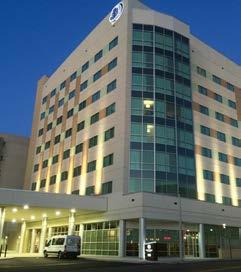

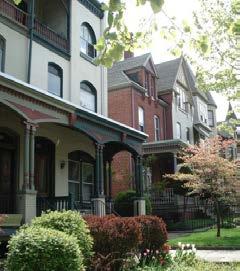
place,” a community leader said, “and it has had to adapt to an awful lot of change and be resilient.”
A resident captured this spirit of resilience and possibility when they told us, “We’re working to get better. We’re working the problems. We’re looking for solutions and we’re working with leaders to make Reading and the school district a better place to live.” Another defended the value of open discussion about community challenges. “The crime is real. The trash and all the bad things that are in the city, they’re real,” they said. “And because we address them and we speak about them, it doesn’t mean we’re being negative. It doesn’t mean that we don’t love our city.”
Despite the economic strains and the ravages of the pandemic, people in Reading shared multiple examples of positive steps that are producing forward motion. The recent Ready.Set.Read!
initiative spearheaded by the United Way and other partners was frequently cited for its effectiveness in helping pre-kindergarten children enter school ready to learn. Many also praised the mentorship program run by the Berks County Intermediate Unit that brings business leaders into classrooms.
Downtown redevelopment has been an encouraging sign for some. In an area that was “deteriorating before our eyes,” as one community leader put it, plans for a new engineering school and medical program are now underway. Another community leader said people are hopeful that the city can “restore those buildings and get them active again, bringing more business.”
In response to the global pandemic, many organizations stepped up to help in new ways. Olivet Boys and Girls Club provided a range of supports for young people learning remotely. The hospital brought together a group of nonprofits to coordinate their local efforts. “You saw many organizations pulling
You can hear a readiness to create a better Reading.
together,” a hospital executive said, “to disseminate pertinent information, restructure organizations, and redeploy their resources and volunteers.”
In comments from every layer of the community, you can hear a readiness to create a better Reading. “I like the idea that there are still a lot of challenges,” one local leader told us. “It’s a place for me to help and be a part of the solution.”
A number of new and often younger leaders have taken up positions in recent years, in public school administration, nonprofits, grassroots youth groups, and at City Hall, among other areas. A resident born and raised in Reading said he moved back to town a few years ago and found “a big change,” with “so many people stepping up, wanting to do good” and “leaders willing to try new things.” These new and younger leaders are “emerging out of newly arrived communities,” a local journalist said, and “stepping up for potential leadership positions, whether that be elected or community-driven.” The Latino community is gaining a greater sense of “ownership,” one Latino resident said, and beginning to
“feel their power politically.” Another was excited about the new mayor “telling his story to the kids in the schools, where he came from, what he had to overcome to become the first Latino mayor.”
Reading’s new cadre of leaders is more diverse in background and age than its long-standing leaders. As examples of this shift, people frequently named State Representative Manny Guzman, Michael Toledo of Centro Hispano, and school official Dr. Yamil Sanchez Rivera, along with Mayor Eddie Moran. Folks in every corner of Reading expressed excitement about the racial diversity of this group and the prospects for “some new faces” to add to a more action-oriented focus to the community’s work. “Maybe they’re coming in free of baggage,” said one community leader.
While people are hopeful about these new leaders, they also recognize that no one can change the community overnight. One leader said no one “can fix decades of disinvestment in just one year.” But these new leaders have already shown that they work differently than their more established counterparts, and they are bringing with them signs of promise for the future.
Reading has seen a myriad of changes in recent decades. The movement of people in and out of the community has accelerated as Reading has become a more affordable alternative to nearby urban centers. Poverty and crime have risen, while the economic divide between urban Reading and the greater county has increased. Many of Reading’s newer families are immigrants and native Spanish-speakers without easy access to work or educational opportunities.
Although people offer signs of progress, the systems that support the community have not kept pace with Reading’s evolving challenges. Some point to the performance of the school system as one sign of this gap. Reading schools are widely agreed to be under-funded and not adequately equipped to meet the needs of a shifting population that includes students from newly arrived families, who don’t speak English fluently, or who don’t stay in Reading for long periods of time. One parent told us, “My children do not
know much English, and there are no interpreters in the classes. They are not understanding practically anything.” One educator wondered if “we can really get our thumb on the ever-changing cultural dynamics.”
Reading’s parents and families told us time and again that the larger education system in the community is not meeting their needs. The tuition support, training programs, and other efforts are “just a drop in the ocean,” one said. “Getting programs to scale is so challenging,” said a community leader. Some organizations “just don’t have the resources to hire the bilingual and bicultural staff,” another community leader observed.
The community is seeking new approaches in order to rally its resources to meet these challenges. Local experts note the risks of “a 20th-century ‘batch processing’ mindset regarding K-12 education,” one that leans on habitual solutions and standardized programs even as students, families, and the entire Reading population becomes more mobile, more diverse, and less secure.
Although people offer signs of progress, the systems that support the community have not kept pace with Reading’s evolving challenges.
The pace of positive change remains too slow for many people, even amid signs of progress. One resident eager for change in areas like housing and employment said people in town sometimes feel “trapped because things are just moving too slowly.”
Many said that real progress requires foundational, systemic changes, such as electing new leaders or rethinking school funding. There are those who say that too often Reading has chosen the wrong leaders to move the community forward. “At the school board, through the years,” one resident observed, “I don’t think some of the people had the leadership capabilities to be sitting in those chairs.” Several people felt the same as the community leader who said that Reading is still stuck “where it has been since I was a kid.” Latino and Black residents, in particular, echoed this view. People praised leaders who take risks and can make things happen even when they meet resistance. They recognize that changes have taken place in the school board and elsewhere.
Meanwhile, other community members balance their own critiques with a greater optimism about those changes already underway. These residents—who are more likely to be White—say people are “working really hard,” in the words of one White community leader. According to another leader, momentum is building amid “a lot of positive cooperation and energy.”
For those who are more optimistic about current progress, another kind of frustration was mentioned: They wish more people in Reading were supportive of the efforts already underway. They don’t want “things that can be changed right away to be deliberately held back” by the work toward long-term, deeper changes, in the words of one leader. Another leader said, “It takes time. I mean, it’s a system, it’s a process.”
Many Latino and Black members of the community experience a dissonance when people speak too optimistically about Reading’s progress. They say too much celebration can serve as an implied defense of the status quo. “That’s the way we do it. This is the way it’s been done,” a Latino leader said. “You hear it everywhere. At the bank, at the library, in city hall, in school.” Another leader, who is White, suggested that while many of his peers “might be committed to change,” they may also harbor a wish to “return to a different time, to rescue history.”
Reading consists of many communities living separately yet intertwined: Longtime residents and recent immigrants; workingclass families and professionals; older nonprofits and newer volunteer community groups; city and county folks. These groups are not at odds with each other,
Reading consists of many communities living separately yet intertwined
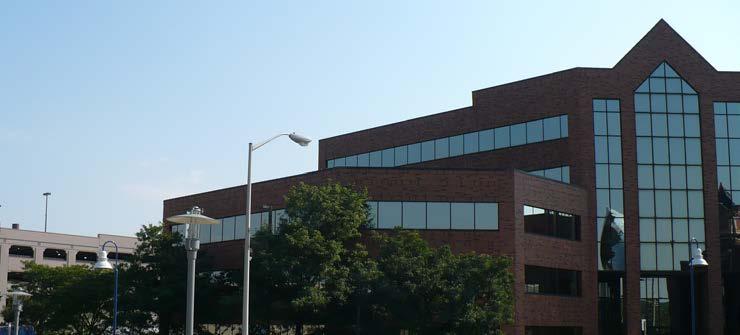
though. Instead, the community is in fragments, not in factions. Their differing points of view reveal the absence of a shared vision or story for what it means to be a part of Reading.
There are “several different Readings,” in the words of one community leader, and some neighborhoods look at other neighborhoods as “not really being part of Reading.” One resident told us that you can “walk maybe three blocks and the feel of the neighborhood is very different.”
Another resident explained, “Perhaps the shyness of not knowing each other, that we
come from different cultures and all that, makes it so people do not have a sense of community.” One person praised the faithbased organizations near her for the ways they have stepped up, and she said her neighborhood “was like a little microcosm, and very different from everything across the city that I see.”
Divides along economic and geographic lines can be stark, and more than one person contrasted the “very, very poor” downtown area with more affluent neighborhoods, such as the area around Albright College. Even within Reading’s single school district, the difference in neighborhood elementary schools is often “like night and day,”
according to a community leader. One resident summed up what many people we spoke with felt: “You can walk across a street and be in a different world.” These divides can have a cost for individuals and for the public environment. “There are certain neighborhoods,” one resident said,” where I don’t feel as welcome.”
There is a divide between Reading and greater Berks County that creates its own tension about both perceptions and policies. One Reading resident said: “We don’t get along with the county, and the county doesn’t want to help us.”
A community leader remarked that half the letters to the editor in the Reading Eagle are from people in the county who unfairly complain about the cost of the city’s so-called ‘Taj Mahal schools.’ Meanwhile, this leader continued, “I don’t see anybody saying, ‘We have some really great outcomes in our schools and we need to invest in this.’”
We heard numerous times that Reading “gets a lot of bad publicity,” in the words of one resident and gets “compared with the suburbs” unfavorably. A Black resident said it was common for people outside Reading to judge an entire neighborhood—or all of Reading—based on the criminal behavior of a smaller group. “They have to separate the whole city from a group of individuals,” she
“You can walk across a street and be in a different world.”
said. “But instead, they’re allowing those individuals to cloud their judgment about a whole city.” One resident described school board meetings in neighboring districts that offer a glimpse of Reading’s local reputation and the attitudes of officials in the region. “They’re all friendly when they’re there,” they said, “but I can assure you, when the recorder is off, if anything comes up about the city, the attitudes are horrifically bigoted.”
One long-term resident called it “absurd” that many suburbanites won’t even go to the city. “Not the city!” they said jokingly, “‘That’s scary! There’s crime everywhere!’ It’s just a misperception.”
Reading remains fragmented— geographically, racially, and among its institutions and community groups. “There needs to be more of that connective tissue,” one community leader said. “People are busy working on their own projects and not linking their work with others.”
Another said, “There are a lot of bubbles and not a lot of cohesion.” Without
that “connective tissue,” conversations usually happen “in separate pockets,” as one community leader told us. This lack of connection not only deepens people’s sense of isolation, but it also reinforces an expectation that leaders are not listening to residents very well, or at all.
Reading’s different communities remain apart, but their hopes for change are largely aligned. All they lack is the sense of possibility that a shared vision can ignite.
The realities of racial inequity and bias are present and costly in Reading. As one resident explained, “You don’t know who is a racist, whatever the field, educational or medical. You do not know what you are going to get out of a conversation.” A longtime resident said they were disappointed to see “negative views” from prior generations still present in local meetings, workplaces, and other settings. “I was one of two people of color that graduated in my class. It was tough when I went to school. I would not have thought that the things that I’ve dealt with we would still be dealing with now in 2021. But we are.”
One White leader said he was deeply
troubled when someone at a meeting, talking about Latino and Black families said, “We don’t want those types of kids in our community.’”
“It’s hard to get out of what’s always been,” one Black leader said, noting the lingering presence of longstanding prejudices.
Bias and biased assumptions about Latino families were a frequent topic mentioned in conversations about education and young people as the entire community works through how to build a system that does right by new immigrants, low-income families, and families still learning English. More than a few people—mostly White—made comments suggesting an assumption that Latino families value education less than other groups. “From the many countries that they come from,” one community leader asserted, “education wasn’t always a focal point.” While others, including several Latino parents and leaders, defined the challenge as one of available time for working parents and the reality of young adults seeking an occupation as a source of family income or a viable career path.
A White non-profit leader said that cultural differences can lead not just
“There needs to be more of that connective tissue.”
“People just make jokes,” one student said, “and think this might not offend us. Then they just laugh it off. I want our community to have a new attitude.”
to personal bias, but to ineffective and misguided policies, especially when more powerful groups profess to be helping marginalized communities.
“Donors or people of influence,” this community leader said, “might not be getting at what people actually need. That’s one disconnect that is probably cultural.”
When it comes to issues of race and bias, the Reading high school students we spoke with did not sound as dismayed as their elders, but they were no less eager for change. They noted the lack of teachers and leaders of color around them, for instance, and spoke candidly about the impact of casual racism.
“People just make jokes,” one student said, “and think this might not offend us. Then they just laugh it off. I want our community to have a new attitude.”
After decades of economic struggle and a series of high-profile crises, Reading is carrying the burden of a bad reputation regionally and nationally—one that looks out of date when measured against the
growing efforts by community leaders and residents. In fact, for a community still fragmented in its civic culture, Reading is nearly unanimous in its exasperation with this negative view—whether imposed from outside the city or from local residents. One resident said that people looking for housing “avoid the Reading School District like the plague” because the quality of local education is widely seen as inadequate. They said, “Those kids that are in the district live with that fact. They’re living under this kind of umbrella of imposed inferiority. It’s not real.”
People say they’ve grown impatient with oversimplified attacks on Reading from the suburbs and the wider county. One resident blamed “the bad reputation” on “people who at one point lived in the city, but then moved to the suburbs and say that the city is no longer what it once was.” Another complained that when a local crime appears on the news, it can be enough to “perpetuate the stigma” with outsiders.
A local teacher said, “The misconception that a lot of people have is that people from Reading don’t want to have a better life. Yes,” they answered firmly,
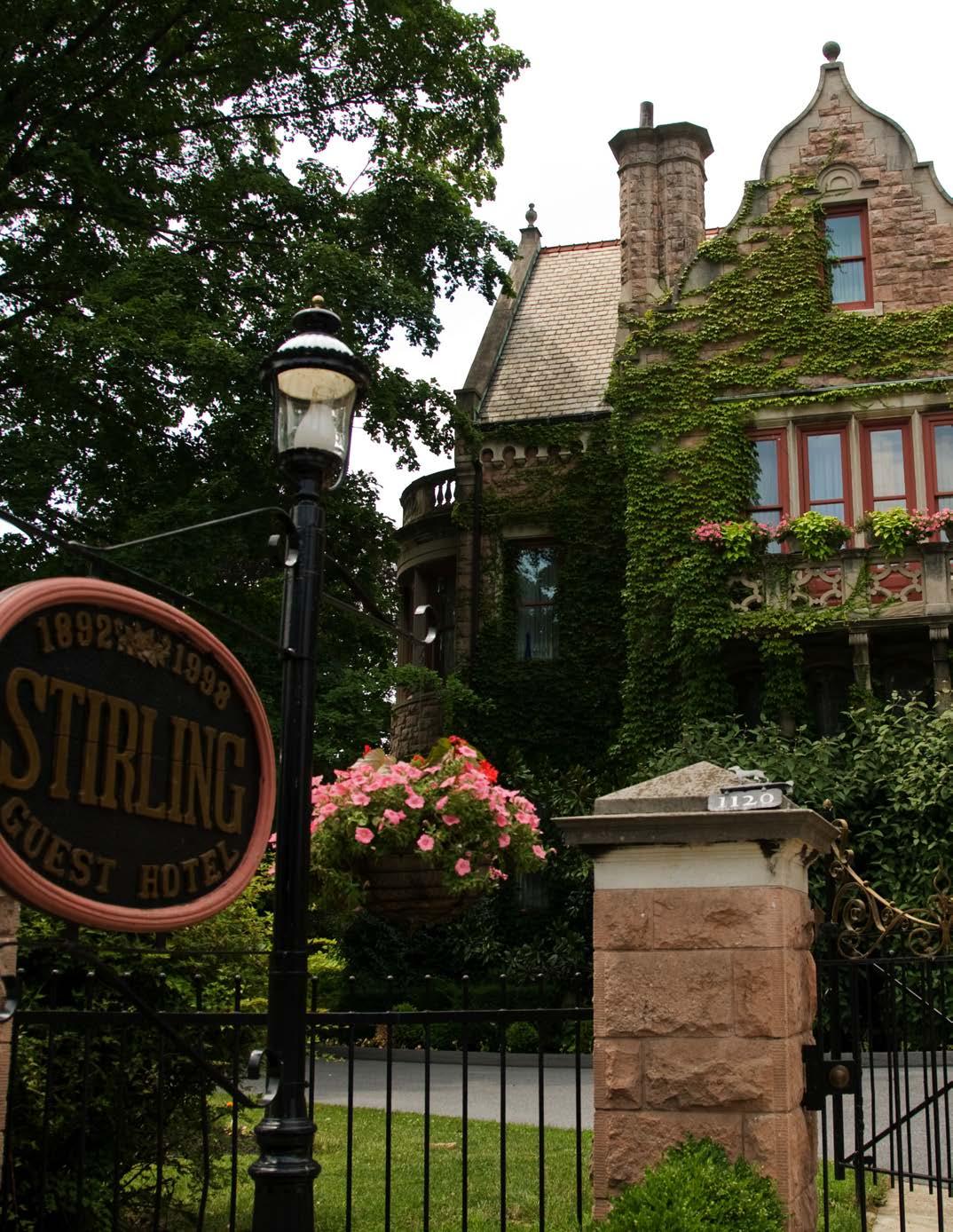
“ everyone wants a good life!” Racial biases create these misconceptions, they said. “We always look at the surface. We have to look at what’s below it. That’s part of the reason why so many people are making quick judgments.”
Residents of Reading are impatient with this negativity that is not just reserved for those who live outside of the community. Many people remarked that a negative narrative is also common right around them. “Griping and complaining have been a part of our history,” one 40-year resident said. Another called out those who permit negativity to become inaction. “Oh, we can’t do this, that’s never going to happen,” they mimicked, then added, “It might happen. Let’s look over here. Let’s knock on a couple of doors.”
People want their leaders and their neighbors to back up their words with action. “We can say community, community, community,” one resident said. “But if we’re not emphasizing what a community is, and what a community should be, then what are we doing?”
The divide between those who are quick to criticize Reading and those who are fed up with negativity is sharp. People’s negativity remains a source of tension and a sign that Reading still lacks a shared story about its future or a more fully articulated path to create a better future.
People want their leaders and their neighbors to back up their words with action.
People in Reading are clear that they are going to have to work together to address their challenges. One community leader, speaking about economic development, said, “There are a number of groups working on all of these issues, and progress is being made. Hopefully, through these planning processes, there’ll be more coordination.” Another community leader noted that there is a need to team up in order to move forward, saying that the community is in a position to say, “We’re going to solve this together. Here’s how we’re going to do it.”
Community members know that it is never easy to “find common ground on where we should be when it comes to educating our students,” as one resident said, but they are clear that this work needs to be done. And it needs to be the responsbility of the community as

Many told us that a shared purpose in Reading does exist, but it is not deep or strong enough yet.
a whole, and not just left to the public schools. Many told us that a shared purpose in Reading does exist, but it is not deep or strong enough yet. “We’re not rowing in unison, but we’re rowing in the same direction,” suggested one leader. Others said that change efforts have been promising, but still lack momentum: “I wouldn’t call us stuck in the mud. We are forward-thinking, but it’s building that momentum” that’s needed.
As the person quoted earlier said, many in Reading are “working to get better … looking for solutions.” This is the driving spirit residents and leaders say they envision for Reading.
As Reading’s fragmented communities bridge their divides and name a shared purpose more clearly, the resulting momentum can accelerate action and include everyone.
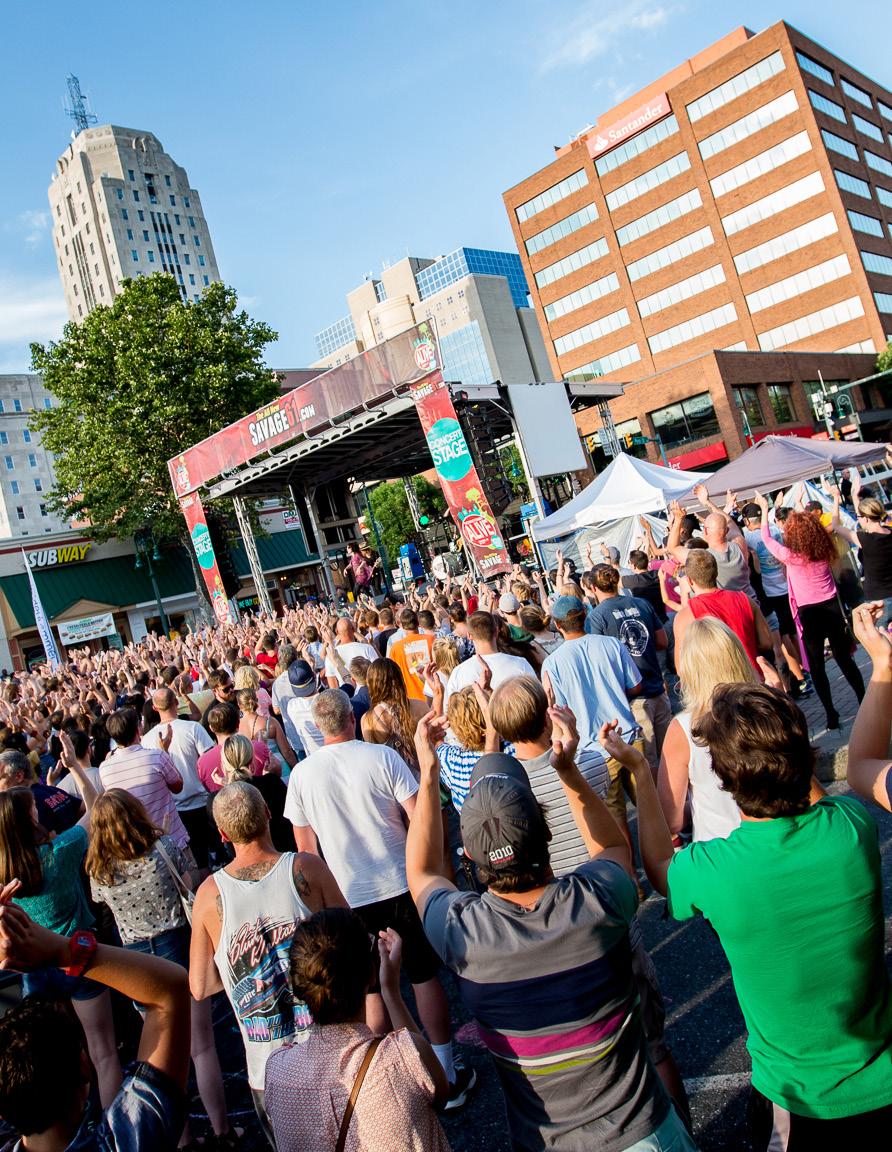
To enable Reading to build flourishing education opportunities for all its young people and families, the community must respond to an array of connected challenges: graduation rates that are below the state average; rates of teacher and student turnover that are higher than average; a significant percentage of immigrant students and families still lacking English literacy; rising poverty and diminished trust in many school and community leaders; and an entire population reeling from the compounded impacts of Covid.
In addition to Reading Public Schools, local groups throughout the community are taking action in a variety of ways to address these challenges: new family engagement and pre-K programs, non-profit initiatives focused on reading and online learning, and internships and scholarships. But the reality is many of these efforts still do not reach enough young people and families, while new actions must be taken to meet the community’s shared aspirations for education.
Based on our community conversations and interviews, people in Reading are calling for a nine-point education
agenda to bring about a more equitable, inclusive, and hopeful path forward for all of Reading’s young people and families. This agenda is rooted in the community’s shared aspirations.
All young people and families have equal access to the education and resources that equip them to reach their goals in school, after graduation, at work, and as contributors to their community.

Parents, students, teachers, and community groups believe educational success has been defined in narrow terms that are biased in favor of the paths that middleclass, White students typically take through school. Success is often equated with metrics such as standardized test scores, on-time high school graduation rates, and college placement rates, even though these metrics aren’t always correlated with real-world outcomes like being qualified for job opportunities or contributing to one’s community. When individual students or entire schools in Reading do not score as well on the traditional metrics as their neighbors, this difference is often seen as a failing of the school or the student, rather than a potential problem with the metrics themselves.
There is a call within the community for a broader definition of success that would make clear there is a wide range of ways to complete school successfully, including moving directly into an apprenticeship or paid work.
A broader definition would speak to the social purpose of education, which includes, as a community resident put it, “Being better people, and in helping the community more.”
Parents told us, as one said, that they believe education should help young
people “feel proud of the city and begin to develop as individuals.”
Reading needs to define a new way to talk about educational success that challenges assumptions about which schools or students are doing well, and why, and what success even means. This new approach must make space for all Reading’s families and students to achieve meaningful success in their lives and to believe that success is possible for them.

Parents told us, as one said, that they believe education should help young people “feel proud of the city and begin to develop as individuals.”
Reading families are looking for educational options that are as diverse as Reading itself. As one parent asked, “If we do not have the resources to help students develop, how are they going to do it?” This outlook means providing pathways for young people who already work, as well as full-time students; for families with financial resources and families who lack means; and for families with varying degrees of access to transportation and technology. It also means finding ways to serve young people who have recently moved to a new school, a new city, or a new country, and may move again before they graduate. Specifically, people in Reading are seeking more:
Curricular and extracurricular programs that support vocational training, apprenticeships, and job readiness for youth.
Tools to help young people plan their own post-secondary education, regardless of their background. We need “resources for the future,” in one student’s words, “so that you can help build connections.”
Expanded support for students to succeed while they’re in school, such as after-school homework programs.
Students need a range of options, as one parent put it, “whether that is vocational, going to college, going to active duty, becoming a young entrepreneur, or going to work in a factory. Any route they’re taking is a great route.” A successful, responsive education system should help young people and families believe that there is “more than one way to win,” in the words of another resident.
As things stand, many believe that the system can too easily overlook young people’s unique needs and define success too narrowly. For instance, some local teachers feel that students are getting “shoved into one large high school,” where it is easy for youth who need more support or alternative options to fall through the cracks. And a high school student told us, “The school is so unorganized. They don’t connect with students and teachers as they should. It drives us all off-track.”
Providing more pathways to win is at the heart of a more equitable education for all.
Providing more pathways to win is at the heart of a more equitable education for all.
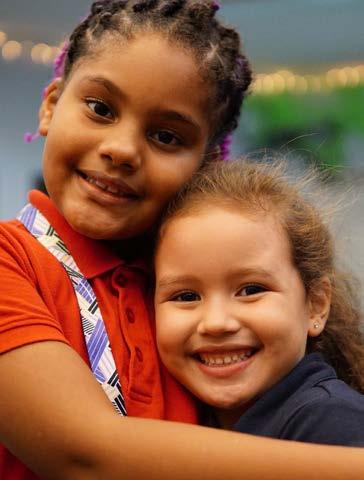
To set children up for success, educators and community groups must invest in pre-kindergarten programs that focus on school readiness and that are accessible to all families. In Reading, a key component of school readiness is building up English language literacy for young children. A parent with limited English language skills is not well equipped to be their child’s “first teacher,” as one community leader put it, “to give them the vocabulary that they need to be ready for kindergarten.” Indeed, one Latino leader told us, “This is the time that you have to really get a mastery of a language.” Actively
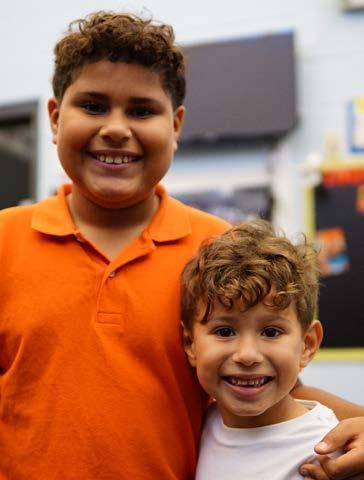
preparing parents who may be unfamiliar with American school systems for the transition to kindergarten is also essential.
Some accessible pre-K supports already exist in Reading. For instance, the Berks County Intermediate Unit runs a free program called Pre-K Counts. Yet, according to our interviews and conversations, these programs only reach a relatively small portion of the families in need, and the programs are not well integrated into all elementary schools.
Getting all kids off to the right start is a basic building block in creating real opportunities for each individual and equipping them to achieve their potential and make their way in the world.
Parents
and families want to genuinely engage in give-and-take discussions and decision-making about education and their futures.
Parents and families want to genuinely engage in give-and-take discussions and decision-making about education and their futures. They want a system that recognizes not all families are the same, and they want educators and others in the community who listen, understand, and respond to their concerns and aspirations. As one Spanish-speaking parent put it, “At least where I live, I have never received an invitation to talk about education in the community.”
Reading public schools have worked hard to offer a variety of community engagement mechanisms; still, many families — and some educators — say that these processes aren’t accessible enough, always easy to engage with, or leading to productive paths forward for everyone. “We’re in the city,” one community leader said, “but there are so many people whose voices aren’t heard because they don’t have time to make their voices heard.” Creating even more authentic engagement will mean
considering new formats, new schedules, and new attitudes of engagement.
Families are seeking:
Parent and community forums held “on the parents’ schedule,” which means holding such sessions at varied times of day, and in various places, because some parents work days, some work nights, and some lack easy means of transportation.
Communications that work for everyone. School officials use email and other digital tools to keep families informed, but families with slow or no internet need equitable access to information with comparable speed and in their own languages.
Real feedback loops. “Involving is different from informing,” said one resident, which is also different from fully “engaging.” For community engagement to foster real trust and legitimacy, Reading’s educators and other groups will need to be open to give-and-take discussions and feedback at all stages of education decisions.
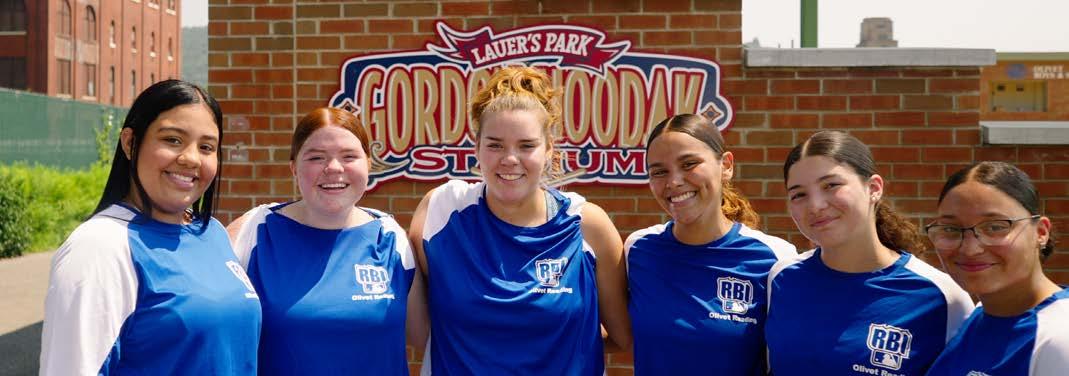
“They’re expecting the parents to come to them,” said one community leader. “Perhaps it needs to be less schoolcentric and more community-centric.” It is only by having a real voice that families and students will be able to shape their own futures.
Almost everyone we spoke with— including students and families, as well as non-profit and business leaders—wants teachers and educators who reflect the racial, economic, and vocational diversity of Reading. One high school student put it this way: “If I had a teacher that did math or science or English that looked
like me, they would understand me more. They would understand me as a person.”
People from every walk of life in Reading are calling for more teachers who are Black and Latino, who are Spanishspeaking, who live full-time in Reading, and who stay on for the long term. They are looking for teachers who are seen as part of the fabric of the Reading community, who can help families connect to the supports they need, and who have invested in the community’s success. As one teacher observed, “It’s hard to build community when you have this revolving door of new staff.”
The people of Reading want teachers who look more like the community, and who are more invested in the community.
“If I had a teacher that did math or science or English that looked like me, they would understand me more. They would understand me as a person.”
In Reading, literacy is fundamentally an equity and inclusion issue.
Many children and families arrive in Reading’s schools with limited English language skills or with limited capacity to write in their first language. This leads to challenges navigating almost every aspect of life—from managing immigration processes to communicating across generations within a family, as well as going to school.
During the recent pandemic, some parents have struggled to help their kids use the Chromebooks provided by the school district, even after help sessions were organized. Limited English language ability also inhibits parents’ capacity to engage with educators. “Not all parents speak English,” one Latino parent said, “but they are good leaders, they have good ideas, good contributions to education decisions for their kids and communities.”
There are a number of initiatives in Reading related to literacy. The Literacy Council of Reading-Berks offers a range of online classes. The South of Penn Task Force is delivering financial literacy programming, and the library offers a range of services including mobile vans that bring books, training, and tech access to under-served neighborhoods. Reading Public Schools has a number of initiatives, including opening a Welcome Center on Locust Street that creates a safe and welcoming environment for the families of English Learners and immigrant students so they can access community and educational resources. Another of their initiatives includes having English as a second language teachers and bilingual paraprofessionals in schools district-wide.
But the people we spoke with said time and again that to ensure real equity and opportunity in education and life, much more support for literacy in Reading is needed. In Reading, literacy is fundamentally an equity and inclusion issue.
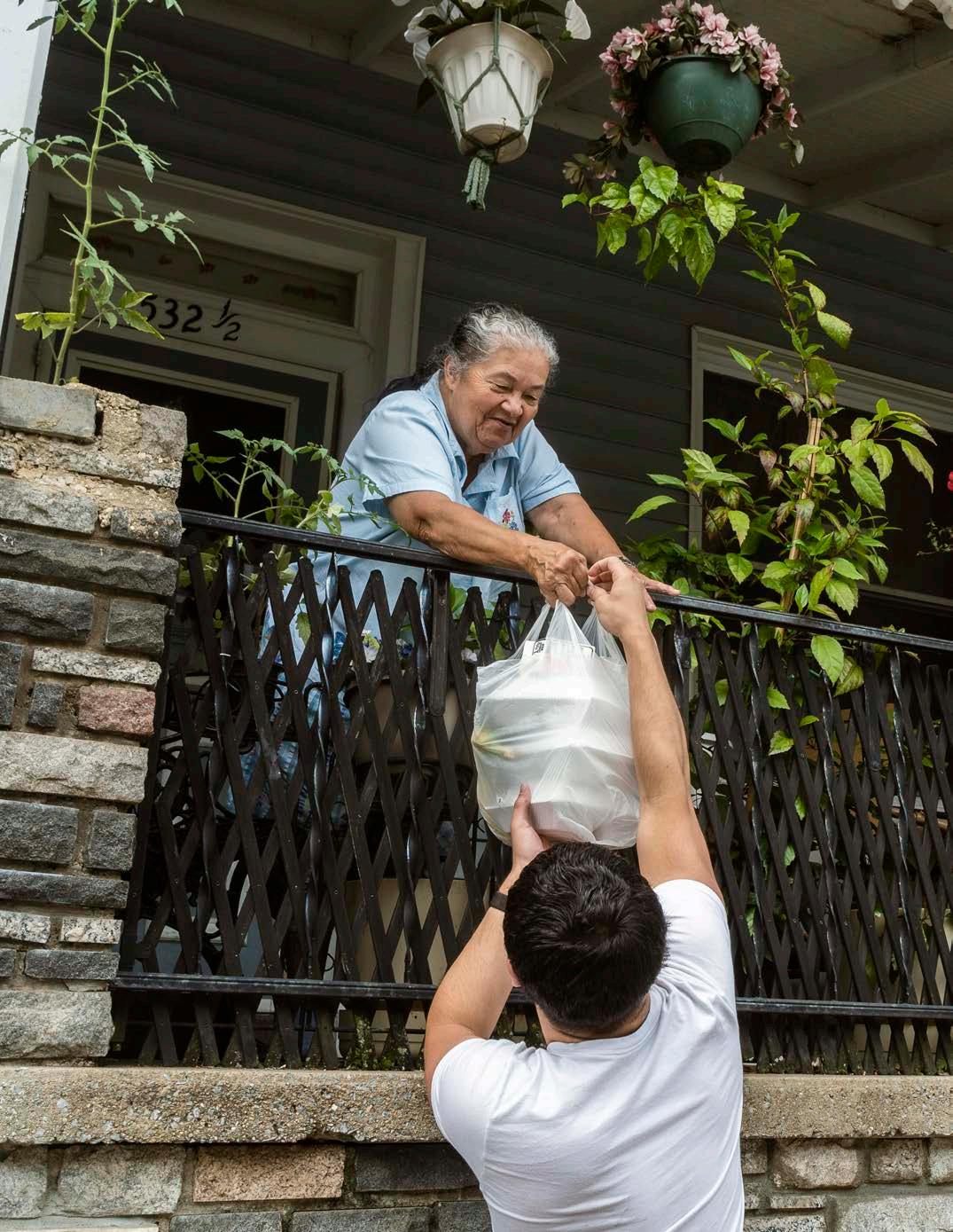
Children and youth in Reading are not getting the mental health support they need to succeed. Many young people in Reading experience social isolation, racism, and poverty. Managing the effects of these circumstances is especially difficult in a community where many people do not speak English fluently, parents may not know how to navigate current support systems, and a pandemic is still active.
Teachers told us that every day they see the effects of insufficient mental health support in the classroom. As one teacher lamented, “We’re still expecting kids to come in here on grade level, speak the language, have support at home, have medical attention, have psychiatric care if they need it.” They then continued, “And year after year, we find ourselves saying, ‘What’s happened to this child? Why isn’t anyone helping this child?’”
One high school student told us, “There should be some way to get affordable therapy because a lot of people in Reading struggle with mental health.” Some leaders observed that other school districts have much greater resources to support students. As one said, they have “social workers, psychologists, caseworkers, and the funds to send kids
to placements where they would be better off. Reading doesn’t have that.”
In addition to counseling and other forms of treatment, people in these conversations and interviews said that Reading’s young people need better access to affordable recreation programs that can help to build their mental wellbeing and their resilience. “Before I got involved in extracurriculars or things apart from school,” we heard from one high school student, “my mental health was so bad.” A parent agreed, calling for more sports and recreation programs in order to address “poor mental health, so that the community is not going to be a weak community, a closed community, and a depressed community.”
Although non-profits like Olivet Boys and Girls Club do much to try to meet these needs, many programs in the community are not affordable to all families, fill up quickly, and can be difficult to get to without a car. Organized recreational programs are important because some parents told us that they worry their children will be unsafe playing in local parks. As one said, “In the area where I am, there are no programs for children in summer, except private things that you would have to pay for.”
The bottom line is that the mental health of students is essential to educational and life success.
A number of organizations in Reading have programs to support young people and their education. Career Ready Berks is a coalition of business leaders that provides opportunities for work experience. Olivet Boys and Girls Club supplemented its existing programming with a space where students could access online learning during the pandemic. The Reading Musical Foundation runs an after-school program focused on promoting Latin music in the high school. At a more grassroots level, we also heard a story about one couple starting an after school program through their church when they had “noticed in our school that it just seemed that the teachers are so overwhelmed—and this is before Covid. They love those children so much.”
We heard time and again, as one community leader said, “All the answers can’t come from the school district. It has to be something that’s collaborative.”
A parent said, “This is a problem for the entire community.”
But individual community-based efforts operating on their own, often in isolation from one another, will not address the challenge at hand. The community must make education a common enterprise, driven by a shared purpose, and rooted in mutually reinforcing actions. Reading
“All the answers can’t come from the school district. It has to be something that’s collaborative.”
needs to aggressively enlist families, neighbors, and members of the private and non-profit sectors as active, ongoing partners in educating and supporting young people and families. People want community partners to step up in a range of ways, including providing mental health services, acting as volunteers and mentors, offering work placements or scholarships, running intramural sports, and raising funds. One teacher said educators “yearn for more of a community connection with the schools.”
Broadening the sources of support for students would also provide more diverse role models inside and outside schools, and it would widen the networks that kids can draw on in the future. High school students told us that they need “a whole bunch of connections to keep their dreams alive.”
Such connections enable the community to take genuine shared responsibility for young people’s education and lives.
9. Clear a path for new investments by setting real funding priorities. Together.
Reading’s school system continues to experience struggles in part due to chronic underfunding. Educators and community members are frustrated by these financial constraints. One community leader declared that school funding is the single biggest problem in the city and told us only to ask them about making more educational progress “when that’s fixed!”
The causes of underfunding are complex and interconnected. State support for local school districts has dwindled over the last decade, and the formula for allocating this support has not kept pace with changing demographics. This leaves communities like Reading with lower tax revenues and a greater reliance on local property taxes, which means local school funding is pitted against other local priorities. “It’s not fair to the kids whose schools are underfunded,” said one community leader, “and it’s not fair to the seniors that worked their whole lives and then have to give their homes up because they can’t afford their property tax anymore.” Some leaders in Reading say they feel powerless to resolve this funding dilemma.
The people we spoke with had a clear message about education funding: Reading cannot afford to be passive. Paralysis is not an option. One leader urged all their peers to focus on straight talk and stronger collaboration. As one leader said about simply decrying the lack of state funding, “that’s an easy answer.” They said, “Figuring out how to effectively work together as a community is more important.”
There is no way forward for education in Reading that doesn’t involve a forthright conversation about funding—one that allows the community to talk openly, weigh options and tradeoffs, and draw a roadmap together. The path to new resources that are used well runs through the same separateness and mistrust that has hindered effective action on other challenges in Reading.
Many people in our conversations and interviews state that it’s time for the people of Reading to aggressively step forward, together, as an active agent in this difficult discussion. One local leader said that, in addition to whatever changes are needed to increase funds from the state and federal levels,“ on the local level we need to make sure that we look for new opportunities and say, ‘Okay, we’re going to make this investment of training these young people.’” Another leader called for “a countywide discussion on how we can best put those dollars to use.”

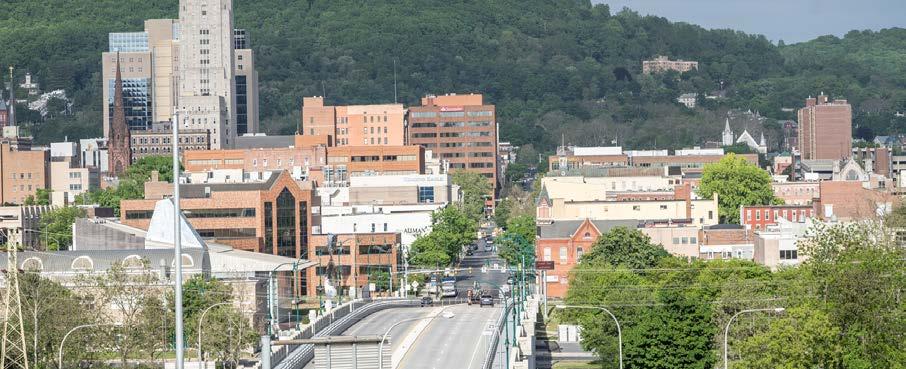
The Harwood Institute’s research and on-the-ground initiatives in communities across the U.S. and elsewhere suggest that for a community to work effectively, it needs a web of fundamental structures, networks, and norms.
“Public capital” is what we call this rich, complex system. There are nine factors that make up The Harwood Institute’s definition of public capital, each of which a community can actively develop and grow.
In this section, we offer a close look at the Reading community through the lens of public capital. This framework should be thought of as a touchstone—not a scorecard—for understanding the current conditions of Reading and how to strengthen the community so that it can tackle its challenges, especially on
education, and create a greater sense of possibility and hope.
When trying to picture how public capital works, keep in mind an ecosystem that exists right outside your door—or put more simply, how our air, water, land, and habitat interact daily. On their own, each of these factors seems quite simple and isolated at times. Indeed, each is often talked about as an independent element. What makes an ecosystem work is the robustness of each element and the healthy relationships between and among them. Public capital operates in much the same way. The nine factors are at once independent and yet highly interdependent. It is the rich, complex interaction between and among them that makes a community work.
An Abundance of Social Gatherings — that enable people to learn about what is happening in the community and begin to develop a sense of mutual trust.
Organized Spaces for Interaction — where people can come together to learn about, discuss, and often act on common challenges. These spaces help a community begin to identify and tap resources to address concerns.
Catalytic Organizations — that help engage people in public life spur discussion on community challenges and marshal a community’s resources to move ahead. These organizations help lay the foundation for community action, but do not act as the driving force.
Safe Havens for Decision Makers — where a community’s leaders can deliberate and work through community concerns in “unofficial,” candid discussions.
Strong, Diverse Leadership — that extends to all layers of a community, understands the concerns of the community as a whole, and serves as a connector among individuals and organizations throughout the community.
Informal Networks & Links — that connect various individuals, groups, organizations, and institutions together to create the cross-fertilization effect of experiences, knowledge, and resources. People carry and spread ideas, messages, and community norms from place to place.
Conscious Community Discussion — where a community has ample opportunity to think about and sort through its public concerns before taking action. People play an active role in helping decide how the community should act.
Community Norms for Public Life — that help guide how people act individually, interact, and work together. These norms set the standards and tone for people’s engagement.
A Shared Purpose for the Community — that sends an explicit message about the community’s aspirations and helps reinforce that everyone is headed toward a common goal.
Recall that to understand the public capital of Reading, The Harwood Institute conducted extensive conversations with community residents that spanned a fivemonth period. We also interviewed thirtysix community leaders. What follows are the insights that emerged from these engagement efforts.
One of the most tangible dimensions of public capital is the presence of social gathering places. From youth sports games to potluck dinners, these are occasions for people to learn about what is going on in the community, forge relationships, and begin to develop a sense of mutual trust. These gatherings are the seedbed for creating and maintaining public capital.
Informal social gatherings happen throughout the community. People in Reading gather at churches and their favorite local restaurants like the Peanut Bar or the restaurant at the DoubleTree. Barbershops and salons, which one person described as “centers of community opinion,” are also gathering places. “Especially in the Latino community, your beautician becomes family,” said one resident. “On any given afternoon,” we also heard, “you’ll see four or five or six men sitting outside any small bodega, shooting the
breeze.” People come together in more public spaces, too, such as City Park or The Pagoda. For some groups, the most common gathering places are at country clubs like Berkshire, fundraisers, or business council meetings.
People meet mostly with those who they already know. Most social gatherings happen among people who know one another. There seem to be few community “overlaps” where people in Reading gather across different groups. One resident said they had no idea where other people even go. “I’m sure there’s a whole other segment of the population that hangs out somewhere else. I just don’t know where that is.” Organizations representing people from specific countries often host festivals for their members; one resident observed, “the Puerto Rican Civic Organization, the Dominican Association, Centro Hispano, there’s also a group of nationals from Colombia that will celebrate national holidays and they will do some kind of festivals and gatherings.” Local groups sometimes hold larger events, but even these sponsored activities tend to gather familiar faces.
Sports have offered the best chance to gather in larger, more diverse groups. The greatest opportunities to meet in more diverse settings have been sporting events. School sports—or neighborhood ball games—let people connect with a wider range of residents.
“Our community needs the opportunity to be in community again. We need to see each other.”
The state victories by the high school basketball team in the 2016-2017 and 2020-2021 seasons were a special boost for community spirit and an opportunity to celebrate together, which built on a long tradition of team victories and championships. Recently, some sporting events have been re-launched with a limited number of spectators allowed. One resident felt this was an important step, and said, “Our community needs the opportunity to be in community again. We need to see each other.”
The pandemic has had a major impact on social gatherings. It has been difficult for people to come together during the pandemic with so many spaces closed. Covid has limited the chances to make organic connections and delayed the organized events at parks or neighborhood festivals that could spark informal connections. Debates about how to re-open safely have often become emotional with deep disagreements on topics like how and when to re-launch school spectator sports.
More fundamentally, Reading’s social gatherings are still catching up to a changing Reading. Social gatherings in Reading don’t tend to pull together diverse groups, but this reality may be a symptom of other divides in the community. Reading’s social fabric is still catching up to its increasing diversity and widening economic gaps. Some people don’t feel safe in some public spaces. The Pagoda, for example, has become a place where people say unsafe activity like drag racing is happening, especially in the evenings. Reading remains many communities more than a single community made up of many groups.
These spaces provide room for people in a community to come together to learn about, discuss, and often act on common challenges. Organized spaces for interaction help a community begin to identify and tap resources to address concerns. The focus is on the opportunities that exist for people to come together—and not necessarily the existence of physical buildings.

Many groups are creating spaces for community interaction. A range of groups provide spaces for people to meet and work together. The library is very active in creating innovative ways for people to interact; for example, it hired a Latino outreach coordinator who is using dance to help people connect and share stories. The Wyomissing Foundation has a program for local residents to work on playground clean-up. The mayor recently organized a series of community clean-up events, which were designed as opportunities for dialogue. As one community leader explained, “Not only do you have your community cleaned, but you’re also engaging with them in the process. You’re having talks with the kids, the youth, the elders, everyone, as you walk the streets.” Olivet Boys and Girls Club has made their spaces available to a coalition hosting a discussion on housing. We heard that some churches provide regular spaces for interaction on issues of shared community concern.
Interaction still tends to happen in separate pockets. Most communitybuilding efforts are short-term, and often don’t reach beyond a single demographic or interest group. As one community leader observed, “Everyone selects a particular group of people that they want to, for lack of a better word, complain to, or express their concerns to, but in separate pockets.” Some local
organizations use Facebook to connect, organize and even meet up; while this provides a “space” for interaction it also can unintentionally lead to conflicts that deepen community divides.
Educators and others are working to create spaces for interaction with families. School officials and non-profits host a variety of organized spaces to work on the future of Reading’s young people and schools. The Berks Alliance recently held a discussion on lessons from the impact of Covid on education. The Berks County Intermediate Unit meets regularly with parents. One Latino parent we spoke to found these meetings very helpful, saying, “They talk about different things and say where they can do more for your children. I stayed at the meeting to find out what’s going on.”
One teacher said their school had “built parent engagement step-by-step” over several years and had now reached a point where “we had almost 500 people at our back-to-school night, out of a population of 700.” They attributed this success to the tireless efforts of an individual principal and a special education teacher who got out into the neighborhood to talk informally with parents. This teacher also supported street-level programs like Adopt the Block, where neighbors go out every Wednesday, “knock on the doors of all the families in that area, give them a bag of food, ask them questions about how they’re doing.”
“There are many people who feel that their voice has no value, that no one is listening, that no one is making changes.”
“Wasteful” dialogue. Many people in Reading do not engage in organized spaces because they do not trust that the dialogue will be meaningful or spur action. “Why am I going to waste my time?” one resident asked. “It’s going to be the same person saying the same thing, and there’s going to be no change.” One parent said, “There are many people who feel that their voice has no value, that no one is listening, that no one is making changes.” Another community leader suggested that powerful people in town, the ones who “have the influence to change things, are not willing to change them.”
Many organizers don’t meet families where they are. Parents and families complain that efforts to convene people often use approaches that don’t fit with their lives. Meeting times and formats don’t always permit families with shiftwork or multiple jobs to join. Language and access to interpreters are significant barriers. At online events during Covid, internet access was a problem for some families. One community leader described their vision for a better engagement approach: “Let’s not be in a conference room, not in a circle. Let’s go to your house and talk about it. Let’s talk about it on the corner at the park, at the bodega. Let’s have a basketball tournament where education is the discussion.”
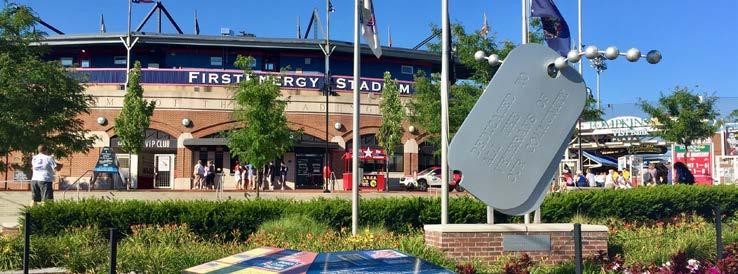
A transient population. Families, teachers, and community leaders come and go from Reading frequently. One resident said that while some of their neighbors are long-term, “a lot of people are more transient and stay for a couple of years, maybe five, and then move on.” A community leader observed that some families are “in the Bronx in November, in Puerto Rico in April, and maybe back here in September.” Such transience makes it hard for the community to get in the habit of gathering.
Catalytic organizations engage people and institutions in the work of public life, spur discussions on community challenges, and marshal community resources to move ahead. These organizations help lay the foundation for community action, but once an initiative is up and running, these organizations often move on to the next challenge.
A small group of Reading organizations are catalytic. Among the patchwork of groups working in Reading, a few organizations came up frequently for their effectiveness in convening conversations, developing sound plans, and catalyzing action. Centro Hispano brings members of the Latino community together to discuss shared concerns. The Berks County Intermediate Unit has
worked with education professionals, political leaders, and business leaders on a range of education projects. One person said the United Way mobilizes a variety of groups and “looks across the community and figures out the most efficient way to address issues.” The United Way’s Ready.Set.Read! program was cited several times as the result of meaningful, effective engagement between diverse non-profit groups and grassroots neighborhood leaders. The Wyomissing Foundation and the local hospital have both hosted community meetings that sparked local action. The Berks Alliance is viewed as being catalytic among business leaders. Career Ready Berks has worked with a range of business, government, and non-profit leaders to advocate for youth to consider career paths in the trades.
Successes happen episodically and in silos. Often the most effective efforts have been narrow in focus and limited in time. Many of the successful efforts remain confined to particular communities and neighborhoods. Because these programs arrive into a disconnected landscape, it can be especially hard to promote or spread these successes across the social and geographical divides. Two Black residents, for example, told us their community had fewer chances to benefit from local projects. “There is no one to pursue all of those types of opportunities for us,” one of the residents said. “We’re not at the top of anyone’s priority list.”
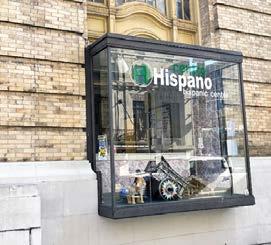
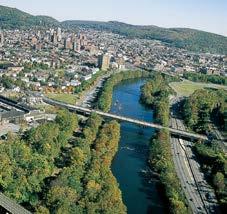
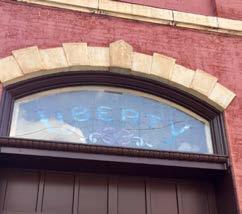
Catalytic work feels like pushing a boulder uphill. Many of the issues in Reading are longstanding and can be daunting to take on, even as the pace of change in the community is accelerating. Some of the leaders we spoke with said catalytic work was especially challenging to launch and sustain. “The numbers can be so overwhelming that it appears nothing is getting done, like pushing that old rock up the hill,” one community leader said.
Mistrust lingers. Because many people in Reading have had negative experiences with community meetings or other engagement efforts, residents are slow to trust new initiatives. People are also skeptical of some larger, more established organizations. One resident suggested, “We should be supporting small groups that are doing things in the community and not so much what we are always funding: The big, old-school organizations that may work really well with one another,” they continued, “but not necessarily really well with the community and community members.”
Safe havens are places where community leaders can come together to talk and work through community concerns in “unofficial,” candid conversations.
Safe havens for leaders don’t exist in Reading. No one we spoke with could identify places where leaders come together to talk and work through community concerns in safe, off-the-record, and candid conversations. Some said such interactions are based more on one-on-one relationships. Leaders from the school district, Olivet Boys and Girls Club, and Centro Hispano, for example, speak to each other frequently. As one told us, “We all feel very comfortable to pick up the phone and call one another when there’s an issue, a concern, a question, a challenge.” On the other hand, when leaders get together in person, these engagements are usually more planned and less crosssectoral, such as Chamber of Commerce events for business leaders or United Way events among non-profits.
“We should be supporting small groups that are doing things in the community and not so much what we are always funding...”
In Reading, the spaces where leaders do encounter each other are more project-based. If leaders do meet up, it is usually to focus on a specific initiative often within a specific sector. Such engagements are usually narrow in focus and may even revolve around a particular event. The purpose can be circumscribed and not driven by creating a safe space for an extended, broader, more informal exchange of ideas and experiences.
Some forums are very public and not very safe. School board meetings and city council meetings in Reading have been described as dysfunctional, with debate focusing on hot button issues and often turning acrimonious. One resident said, “People are very polarized, very ideological, and unreasonable,” at some Reading school board meetings, “and not civil about their viewpoints on things like wearing masks or whether the football team should be allowed to come back.” Some local leaders report feeling attacked or exposed to varying degrees of racism at meetings like these. This environment makes leaders cautious to reach out
to those with different opinions or talk informally and off the record, except with individuals partners that they trust.
Strong, diverse leadership must extend to all layers of a community. Leaders must understand the concerns and aspirations of the community as a whole; they must serve as connectors among individuals and organizations throughout the community.
People consistently point to a small group of leaders they trust. When asked about local leaders, people in Reading tend to repeatedly mention the same small group of leaders: the school district superintendent, the mayor, the leaders of organizations such as Olivet Boys and Girls Club, public library, hospital, Centro Hispano, United Way, Alvernia University, and a few leaders of business groups. “It’s the same people,” one community leader said, “on numerous boards of numerous organizations.” Many people credit these more prominent leaders for playing a

key role in recent positive changes. The school superintendent “completely turned around” the school district, one community leader observed. Another said the election of a Latino mayor “brings a lot of pride and a lot of goodwill.”
Emerging leaders with diverse perspectives. In recent years, Reading has seen a new group of change-focused individuals who “look more like Reading” taking on leadership roles. “There are leaders emerging out of newly arrived communities and also younger people stepping up for potential leadership positions, whether that be elected or just community-driven,” observed one
community leader. This is a common observation we heard. Mayor Eddie Moran, State Representative Manny Guzman, Michael Toledo at Centro Hispano, and Dr. Yamil Sanchez Rivera at Reading Public Schools are among these newer leaders. “For the first time, we have a city mayor that really looks like the majority of the population,” said one community leader. There are also several younger leaders working to promote youth voices, including Wesley Butler, a former basketball star running for city council; Anthony Orozoco, a public radio reporter; and Daniel Egusquiza of Barrio Alegria.
When asked about local leaders, people in Reading tend to repeatedly mention the same small group of leaders.
Reading’s emerging leaders often work in different ways than their more established counterparts. Said one resident: “The leadership is more open. It’s younger. It’s more progressive and more willing to take a risk. Risk-taking was not in the game twenty years ago.” Both the school’s superintendent and the mayor were praised for their willingness to meet informally with residents and get out into the community. Both talk about their personal experiences with the same challenges families in Reading regularly face. State Representative Guzman was described as “really out and about in the community.”
Reading has a history of leadership failures and public mistrust. A history of internal conflicts and turf battles has left Reading residents with a dim view of their leaders. One current leader recalled an era before Dr. Mumin’s arrival when “the school board erupted in fistfights and threw chairs at each other” and school superintendents frequently would be fired or resign. In some cases, former leaders were found to be corrupt and were charged with crimes. County
commissioners reportedly have a history of antagonism when it comes to debates over the school system.
Such local scandals and public acrimony have made people wary of engaging in community life—or even certain that their participation is useless. These behaviors have helped cynicism to take root and left residents to seek new avenues of advocacy. One resident said, “Meetings become very adversarial. You take a position, you go there to fight for this, or fight against that. The playing field is not set up to bring about consensus.” Others complained more generally about leaders with big egos and narrow agendas who “really slow down the momentum” or “want to keep the spotlight or make sure they get credit or funding.” Given this history of strife and disappointment, it’s not uncommon for people to look at new initiatives and say, as one resident put it, “They’re not going to actually do anything.”
A failure to reflect the whole community. The reputation of some leaders for isolating themselves and pursuing their own self-interest has left many residents feeling that Reading
leaders do not have deep connections within the larger community. Few leaders are known for reaching across the divides and layers of the community. Reading’s established leaders and educators tend to be White, while the newer, communitybased leaders tend to be Latino or Black. This pattern extends to nonprofit executive leadership, which is “not diverse at all,” in the words of one Latino community leader.
Limited mentoring for new and younger leaders. Some organizations in Reading are taking steps to mentor new and younger leaders. Career Ready Berks, for example, is launching a new program to bring young people working in the trades into schools as speakers and mentors. United Way is encouraging more Latino individuals to join non-profit boards and providing training. However, many people said that more needs to be done to develop Reading’s new and younger leaders.
Informal networks and links work to connect various individuals, groups, organizations, and institutions together to cross-fertilize experiences, knowledge, and resources. Through these networks and links, people carry and spread ideas, messages, and community norms from place to place.
“The leadership is more open. It’s younger. It’s more progressive and more willing to take a risk.”
There are some informal networks in Reading. As noted earlier, leaders from the school district, Olivet Boys and Girls Club, and Centro Hispano, for example, speak frequently with one another. “We all feel very comfortable to pick up the phone and call one another when there’s an issue, a concern, a question, a challenge,” one community leader said. A group that calls themselves the “Golfistas” functions as an informal network made up of Latino leaders from different walks of life. According to an interviewee, they have “open discussions over a round of golf about the community, about what’s going on, and is there anything we can do to support this effort or that effort.” Another group gets together at a restaurant once a month to talk about diversity issues. Non-profit and public sector leaders are also linked together through informal connections and conversations. School principals get together regularly as well.
More needs to be done to develop Reading’s new and younger leaders.
Reading has some resident-driven networks. There are unknown numbers of informal networks that work at the neighborhood or small-group level throughout Reading. These can be harder to identify, but they do exist. One resident told us about a woman in his neighborhood who “is always sitting outside.” They said, “She knows who’s sick. She knows who needs help. She knows who has problems. She knows who’s probably going to get evicted.” This individual is a natural network builder. “She gathers chairs. People pass by, and they just sit down with her and talk.” Another individual described a group of friends who went away to college together and then returned to town and “sort of started by trying to get kids off the street, doing some after school things.” When these networks exist in a community, they are the seedbeds for trusted community action.
Egos and turf battles plague some informal networks. While some community leaders credited informal networks as sources of important community knowledge and collaboration, others pointed out that
cooperation sometimes breaks down due to “big egos.” One community leader said that the focus of conversation can turn to: “Look at me! Look at what I’m doing.” At times, conversations break apart because people “take their ball and go home, saying ‘I will do it on my own, I’ll start something new,’” according to another community leader. This observation was a recurring theme in our interviews and conversations.
Informal networks can be difficult for new people to join. The informal networks in Reading tend to be built around “certain key people,” longstanding leaders, or individuals in formal leadership positions. This dynamic can make it difficult for new people to make connections. Informal networks are sometimes described as “cliques or clubs,” and they can increase the impression that decisions are being made behind closed doors. “There are probably a lot of conversations taking place,” one leader said, “either more one-on-one or in small groups, that I’m just not aware of.” Left unchecked, this dynamic can create even more mistrust in a community where significant mistrust already exists.
The community’s transience impacts informal networks. While long-time local leaders are connected to one another, residents come and go from Reading frequently. Education leaders, teachers, and some non-profit leaders also routinely move in and out of the city. This movement can make it difficult to build and sustain informal networks or to add new members to the networks that already exist.
It is through conscious community discussion that a community creates opportunities to think about and sort out its public concerns before taking action. Communities that work together make a conscious point to constantly engage each other—citizens, institutions, leaders, and others. This is a key part of creating a shared sense of purpose and direction within the community.
Many groups in Reading have sponsored community discussions in recent years. The Berks Alliance holds monthly community conversations on topics of shared concern. One recent meeting focused on the impact of Covid on the education system, while other sessions have covered housing, farmers’ markets, and the changing face of local media. Anyone can submit suggestions for topics. The hospital hosted a year-
long visioning process that reached every part of the Reading community. The Oakbrook Collective Impact Council has had an ongoing dialogue with neighborhood families about their priorities for action. United Way’s Ready.Set.Read! initiative emerged out of extensive community engagement. During the pandemic, the school district has used software called ClassDojo in an effort to promote two-way dialogue between parents and teachers. Olivet Boys and Girls Club recently convened a neighborhood conversation after the murder of a teenage girl. All of these efforts, to some extent, included community residents in discussions. Other meetings on issues of shared concern are frequently held by groups like Centro Hispano.
Engagement at official public meetings is often not constructive. Historically, public meetings in Reading have a reputation for stalling due to turf battles and self-interested individuals. A community leader said participants may be “well-meaning and well-intentioned” but
When these networks exist in a community, they are the seedbeds for trusted community action.
still demand their “piece of the pie.” One observer said that school board meetings can be a set up for frustration because “people go in charged up thinking that they can have a debate with the school board and somehow win. That’s not how anything works.” There can be little giveand-take at many meetings.
The same people tend to show up to community discussions. Many people praised educators, non-profits, and others for their efforts to engage a wide range of people and to adapt their strategies to make their engagement efforts more welcoming to more community members. Even so, too often it is “pretty much the same people at the table.” As one community leader put it: “Whether it’s Centro Hispano convening people to talk about education, or United Way talking to people about health equity, or the Reading Hospital talking to people about access to care, it’s still pretty much the same individuals talking,” they said. Bringing new voices to the table was seen as crucial to making real progress. “You invite squeaky
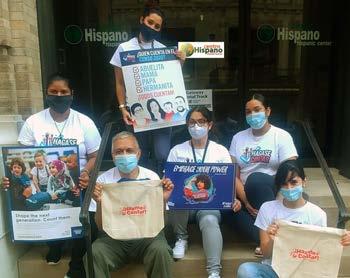
wheels to the table, and they just complain about the same stuff,” a community leader said. “But if you invite new people in a new way, they’re really positive and they want to give you good input.”
Engagement often does not truly engage people. Even when groups gather community members for discussion, the processes are often led by non-profit leaders, civil servants, or other “experts” whose assumptions and habits can get in the way of real listening. One community leader complained, “We’re really bad at asking ‘What do you want?’ rather than telling you, ‘What do I think you want?’” Another leader said, “Until the students and their families are part of the conversation, you’re not going to move the needle very far.” One resident suggested that more time to meet fellow participants would help make meetings more effective. “Once people learn to know each other and trust,” they said, “we can have some of the more difficult dialogue that needs to happen.”
Efforts fail to meet people where they are. As noted elsewhere, many people in Reading cannot join community meetings because they are at work or caring for their children. During Covid, virtual meetings were challenging for people with limited internet access or technology experience. One leader suggested more effort could be made
to hold meetings in local neighborhoods where it is easier for people to gather and feel more comfortable; language barriers also must be addressed. Each and all of these realities create obstacles to conscious community discussion that organizers need to consider and act on if they want to meet people where they are.
“They’re not going to do anything.”
Many people said that engagement efforts in Reading often fail to live up to their promises. Organizations end up in endless planning loops. As one resident described it, ”’Let’s do a survey, let’s do a study, let’s do five more studies on the same thing that we did ten years ago.’
Then people start to think, ‘They’re not going to actually do anything.’” Too often, people say, reports end up sitting on a shelf, with no action taken.
Biting off too much at once. Another problem that people in the interviews and conversations identified is that too many efforts try to bite off too much too soon. This can make community issues seem too big to tackle or too overwhelming to overcome. Here is how one community leader talked about
the situation: “The problems seem too big, and the group gets lost in a myriad of details and trying to solve it all at once.” When problems seem too big to take on, generating a sense of common purpose and agreement on even where and how to start taking action, can seem all but impossible. Many efforts end up “splintering apart because people can’t agree on 100% of everything,” according to one resident. Instead, people need to figure out those places where they do agree, and how they can get started.
Common community norms for public life help to guide how people act individually, interact, and work together. These norms set the standards and tone for public life and engagement.
People do care. It is clear from our conversations with residents and community leaders that many people in Reading care about one another and about Reading’s future. There are some
“Until the students and their families are part of the conversation, you’re not going to move the needle very far.”
who have stepped back from engaging in the community, while several high school students described their own impatience to leave the community as fast as they can. But disengagement is often a sign not of disinterest, but of frustration. Many people in Reading say they love the community and want to work to improve it. As the community leader quoted earlier said, “It’s a place for me to help and be a part of the solution.”
There is increasing engagement and collaboration. Throughout Reading, there is a growing level of resident engagement and cooperation among groups. This can be seen in examples throughout this report. Not only is this activity taking place, but it is increasingly becoming an expectation for how community work will be done. Indeed, this is a central feature of Reading’s education agenda.
People’s new standard is real action. There is a growing expectation among residents and community leaders that addressing people’s aspirations for the community—and providing an education for all of Reading’s young people— demands action. Current and recent community efforts have yielded such action, but throughout these pages, you can hear the community calling for more, and saying they are ready.
There is frustration amid aspirations. Reading is not an apathetic community. Rather, some people are frustrated, even
angry, about not being heard or seen, or that not enough action is being taken. Frustration like this shows hunger, not apathy. Indeed, amid their frustrations, many people reveal clear aspirations for joining with others to create a stronger, thriving Reading. While their search may be frustrated or thwarted at times, their aspirations were vivid and apparent in our interviews and conversations. The question for Reading and its allies is how to unleash these aspirations through real and authentic discussion and common action. Hanging in the balance is which norm— frustration or aspiration—will flourish.
Reeling from changes, hunkering down. The combined history of financial problems, education battles, and mistrust has left Reading’s communities short on hope and suspicious of many traditional civic organizations and institutions. At the same time, population changes and growing needs have strained the capacity of local organizations and deepened divides between urban and non-urban residents, between rich and poor, and between different racial and ethnic groups. People in every part of Reading are more likely to look to their usual colleagues or communities for connection and support.
A failure to see and hear all people. Whether it’s immigrant families seeking more access to school decisions or long time residents resenting criticisms of
Reading from outside, people from all corners of Reading feel misunderstood and unseen. Amid the changes and difficulties that have disrupted life in Reading since Covid, and in the years before, people are longing to have their full history and their most urgent needs and aspirations recognized beyond their own small circles.
Feeling excluded from the decisionmaking process. Many in the community complain that too many officials, institutions, and organizations work behind closed doors, as noted earlier, “in their own boardrooms or meeting places, little conference rooms.” Some feel that attempts to engage people are a mere exercise filled with false promises and that it is hard to have a real voice in education decisions. Many families cannot join decisionmaking spaces because work hours or transportation costs make it unrealistic to participate. More Reading families feel unheard by leaders than feel heard.
Self-interest at the expense of the common good. Many people spoke about feeling like “everyone is out for themselves” and that people will “take their ball and go home” if they don’t get their own way. It can be difficult in Reading to enlist people in discussions about the greater common good, especially with the persistence of mistrust and the making of false promises. The challenge is to continually provide more and more down payments on a new way of working in the community.
Doubt about whether change can happen. There is a nagging sense that major local institutions, non-profits, the school system, and others will not create positive change through their efforts. People’s distrust is reflected in their comments about these institutions and decision-makers—a belief that the institutions do not really listen or that families in need will not get the support they need for their children to succeed. People hold to a belief that racial inequities and bias persist despite any efforts to address them. A lingering lack of civic confidence hangs over conversations about change, and so many people, for now, disengage from such conversations altogether.

When communities have a shared sense of purpose, explicit messages exist about the community’s aspirations and about everyone heading toward a common goal—or at least trying to work at common goals.
The community has clear shared aspirations for its young people and their education. When it comes to education, the people we engaged expressed a clear desire for all young people to have more equitable opportunities and to realize their full potential. If these folks are an indication of the larger community, there is a community-wide shared intent to move forward. As one community leader said, “We know that the education system is really the lifeline for economic development and for the greater good of the community.” The community’s desire to support the equitable education of its children is echoed throughout this report, and a shared sense of purpose is articulated concretely in Reading’s education agenda.
There is not yet a common understanding about shared action. Across the community, there is a sense that people are not aligned about the shared actions that can move Reading forward. “I feel like it’s not a lack of resources or interest,” a community leader said. ”It’s just a lack of alignment
You can hear the community calling for more, and saying they are ready.
and clarity around, ‘What are we going to do and who’s going to play what role?’ and then, ‘Is everybody committed to it?’” Another leader said, “We are not coming together enough to figure out how we impact more people by pooling our resources.” A resident said there needs to be “a common understanding” across the community of how different groups and residents can act together.
People want to define a shared purpose that can drive shared action. Many people we talked with expressed the need for a greater shared purpose that will draw their community closer together and drive community action supporting Reading’s young people, their families, and their education. As one community leader told us, “We have to bond together to help these families. That’s really what’s going to make the difference, a unified front.” People attribute many of the barriers to change to the lack of a strong shared purpose, which results in inefficient uses of limited resources, duplication of effort, and missed opportunities to bring new
partners on board. Several people held the same opinion as the resident who said, “Our community is pretty good at figuring out how to get from A to B once it’s told where B is.” But for Reading to act effectively—to get from Point A to Point B—this deeper sense of shared purpose is a requirement. “There’s a lot of smart people,” one community leader said, “a lot of good, hard-working people, and actually, probably more money than we admit to floating around that just doesn’t get applied for the greatest impact.”
Egos and territoriality. We heard numerous times that some leaders in Reading are too focused on getting credit for their actions or obtaining money for their own organizations. As already noted, “People want the spotlight to be on them. It’s almost like that recognition is more valued than the action itself,” observed one resident. Another resident noted, “It’s a lot of competition, and it’s all about them.”
Competing priorities and limited resources. Despite the broad interest in improving education, some collaborations get stalled around a lack of consensus about the approach. Describing conversations among business leaders, one local leader said, “Some of them think it’s housing. Some of them think it’s education. Some of them think it’s restoring passenger rail
service. So, we have a wide variety of opinions as to what we ought to be and trying to marshal all that together.” Sometimes, disagreement about priorities is tied to resource limitations. One community leader said that the local government is “trying to keep residents happy, keep taxes low. There are competing tensions for goals that are important to the community.”
Caution from past efforts. There is a degree of skepticism, even cynicism, hovering over the community because of past planning processes and change efforts that did not lead to significant action. Efforts to engage residents are “a dime a dozen,” in one person’s words, “and if the conversation is not followed by an action plan or something tangible that the community sees, then people lose hope.”
Fighting a negative narrative. There is the persistent negative narrative that gets imposed on Reading from outside and that has stunted Reading’s own selfimage. This narrative shapes people’s attitudes, beliefs, and actions. It serves to hold the community back. As one teacher put it, “Obviously there’s going to be bad things that are happening, but if we continue to change that narrative and spread some of the good news, hopefully, people can change that perspective.” This is a critical challenge for Reading to meet moving forward.

Reading can be even stronger, and thrive more fully when people work to create their future. Together.
This report is about how the people of Reading can come together to ensure that all young people and families have equal access to the education and resources they need to reach their goals in school, after graduation, at work, and as contributors to the community.
In different voices, but with a common wish, Reading is asking for a new path forward. This path is rooted in ensuring that all people have a voice. That Reading’s long-time divides are bridged. That education becomes a community enterprise and does not simply get left at the schoolhouse doors. This new path demands forging stronger bonds of community trust, more authentic and deeper relationships, and more dynamic ways of working together.
There is one more thing required by this new path: a clear-eyed recognition of how change happens. As Reading community members say repeatedly
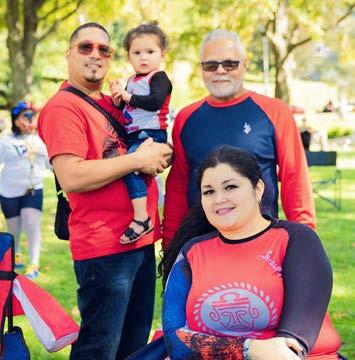
in this report, there are no quick fixes, magic solutions, or single policies that will enable the community to fulfill its education agenda. Instead, communities move forward and thrive by growing themselves. By unleashing a chain reaction that begins with single steps and expands over time. By taking intentional steps that expand the community’s civic confidence and belief in itself.
Here is a series of steps that can guide the community in taking a new path, one rooted in shared purpose and driven by common action:
Start where the community is.
People in Reading want to see action on fundamental education priorities for young people and families, such as having a voice in education decisions, defining a community vision for educational success, and making English literacy programs accessible to all families, among others. The nine-point education agenda lays out clear priorities. However, it is easy to embrace this agenda and take actions that still fail to address these priorities. That approach will only lead to further frustration, even cynicism. To build genuine public will and harness people’s energies, action must start where the community is.
Make down payments to grow civic confidence and trust.
T here is a palpable lack of civic confidence in Reading, of a shared belief that change is possible. It is imperative in situations like these that people make concrete, recognizable down payments on a different way of doing civic work. No single action alone can do this. Rather, what’s needed is an unfolding new track record that can only come when actions that are taken one step at a
time, built over time. People need to see real proof that change is possible.
Roll with the willing and be open to new contributors.
W ho can help create the change that Reading wants? Throughout our conversations, people identified long-standing and emerging leaders and organizations they trust. Reading must build on these trusted resources. Reading must also be open to tapping into the capabilities of all residents, organizations, and groups—especially those who are not viewed as traditional actors or not seen to have relevant capabilities, especially on education. Everyone will have something to contribute when it comes to the success of young people and families in Reading. Only then, can education be a common community enterprise.
Develop more organizations, leaders, and residents who are turned outward.
T here is a widespread belief in Reading that organizations and leaders leave people out, make false promises, or work in brief episodes when they try to engage the community. Reading must work to develop more organizations, leaders, and residents who have the mindset and practice of being “turned outward” through actions that make the community the reference point for engagement and

action, rather than decisions made in conference rooms or based on self-interest. Only when individuals are turned outward can they see and hear all people, act on what matters to them, work with a shared purpose, and align their choices with the community. Turning outward is a prerequisite for taking shared action.
Invest in informal networks for civic learning and innovation.
O ur conversations revealed that much of the good work in Reading happens in individual projects, in pockets of innovation across the community. In order to move forward effectively, communities need opportunities to discover what they are collaboratively
At the heart of the challenges facing Reading is a need for a greater sense of shared purpose.
learning and to decide how to recalibrate their continuing efforts.
This process of “civic learning and innovation” also includes talking about the nature of relationships and how people themselves engage, among other factors. It is through these new collective understandings that further
New can-do narratives only take hold through concrete actions that demonstrate the possibilities of a new path.
possibilities for innovation and growth are unlocked. To achieve this, all must commit to the creation of ongoing spaces for civic learning.
Forge new norms and a sense of shared purpose.
At the heart of the challenges facing Reading is a need for a greater sense of shared purpose. This shift occurs when people discover their shared aspirations, work through challenges, and are clear on their purpose in taking action, together. Shared purpose is built upon productive norms for interaction—including making room for everyone to engage, listening deeply, being willing to hear different perspectives, making commitments to one another and following through, and working for the common good. Norms and shared purpose are what make communities work.
Generate a new can-do community narrative.
A negative narrative hangs over Reading and is shaping people’s mindsets, actions, behaviors, and
spirits. Such negative narratives hold communities back and can be the greatest hidden factor to whether communities move forward. But beware: narratives do not change because someone hires a public relations firm to “convince” people of some new reality about themselves. New can-do narratives only take hold through concrete actions that demonstrate the possibilities of a new path. Such actions must be real. They must emerge from the community. They must be believable. As Reading takes more and clearer positive steps, it needs to actively tell these new stories, without hype, without sensation, and without overinflating their significance. These emerging stories must be told consistently and over time.
Reading Thriving, Together is about the community ensuring that all young people and families can achieve success in their lives. And it is about how this community can become stronger, and thrive more fully, as people create their future together.
